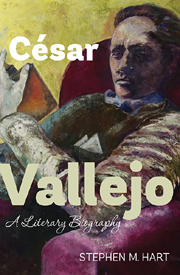2 - The Fires of Love (1917–1923)
Published online by Cambridge University Press: 05 July 2013
Summary
Vallejo set out for Lima, and arrived there on 30 December 1917; he stayed in a little hotel in calle Pescadería, a road leading off from the Plaza de Armas in the historic centre of Lima. It was to be the beginning of a new chapter of his life. In emotional terms he was leaving behind a string of women, from his first love – his niece Otilia Vallejo Gamboa – to the sixteen-year-old who had inspired the poem ‘El poeta a su amada’, who had so shocked Trujillo's bourgeoisie, ‘Mirtho’. And now he was ready for new intellectual pursuits. The world was being transformed around him, and he was changing in tandem with that world. With the end of the First World War in 1918, Vallejo's generation came of age. Indeed, Lima in 1918 was teetering on the brink of a radical political and social change. It was the penultimate year of the so-called Aristocratic Republic, which had been inaugurated by Manuel Pardo's presidency in 1872, a period when Peru was governed by the descendants of old colonial families who had profited from the guano boom of the nineteenth century and had made fortunes in ‘sugar, cotton, mining, banking, insurance, real estate and manufacturing’. Lima was the home of high finance, of education, of government, and the arts, and by moving to Lima, Vallejo was following the well-trodden path of a number of provincials who sought to better themselves in the capital.
- Type
- Chapter
- Information
- César VallejoA Literary Biography, pp. 54 - 103Publisher: Boydell & BrewerPrint publication year: 2013

